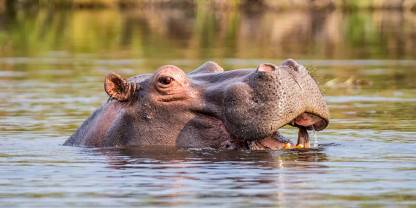Average Expert Rating
Rating Breakdown
Write a User ReviewA Watery Exception
Read more
further east, including Bwabwata, Mudumu and Nkasa Rupara (formerly Mamili) – the last of these being flooded for much of the year. Lodges and houseboat safaris are available in these reserves, though a 4WD is required in most areas. Popa Falls, a short drive from Mahango, protects an attractive, fast-flowing stretch of the Okavango River, where the elusive spotted-necked otter is often seen.The Fertile Waterways of the Pan-Handle Shaped Zambezi Region
The Zambezi Region (formerly Caprivi Strip) is a land of fertile, flat floodplains surrounded by perennial rivers. For me, the drive along the Caprivi Highway (B8) is a far cry from the arid lands of the Kalahari or the Namib-Naukluft and it always comes as an unexpected surprise to most visitors to Namibia. Birders get the greatest surprise, as the region is home to more than 450 species – that’s over 70% of Namibia’s total bird count. The game parks – Mahango, Mudumu, Nkasa Rupara (Mamili) and Bwabwata – are known for their watery environments, riverine flora and range (if not profusion) of game. You only have to compare the appearance of the land on either side of the boundary lines (basic homesteads along the roadside and woodland cut down for fuel) to appreciate the importance and value of these parks. For me nothing beats a sunset river cruise in this region and the lodges make the most of their riverside settings.
Namibia’s Lush Green Heartland
Namibia is famous for many things; however, lush green wilderness and abundant water are not usually amongst them. The lush watery environments and riverine habitat of the Caprivi are the very antithesis of the stereotypical Namibian desert safari. Rich in rivers, the Zambezi Region (formerly Caprivi Strip) is Namibia’s tiny slither of delta-like wetlands. Superb lodges, unspoilt wilderness and rapidly rebounding wildlife mean that the Zambezi Region is deservedly clawing its way back onto the safari map. The place is well worth exploring. I personally like to visit between September and November, when wildlife viewing is good, and to be there when the first huge thunderstorms impressively unleash a deluge upon a grateful landscape.

